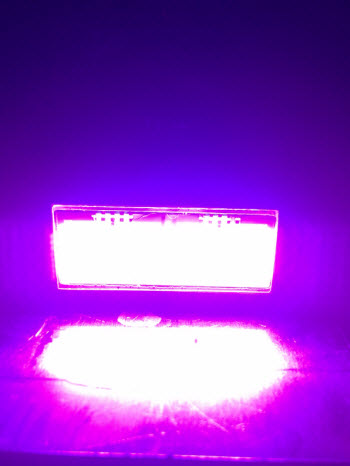Tags
Related Posts
Share This
Water-Cooled UV Curing System
by Henry Freedman
Applications include digital presses and offset UV printing production.
Small is elegant when it comes to electronics. Technology transfers from printing plate technology (like emulsions, whirl coating methods) have over time resulted in key developments required for electronics manufacture. Now let’s get small.
The “packing density” of circuits on a microprocessor is determined by how small electronics can be made in the manufacturing process. Compact footprint inkjet presses require a small, sustainable and powerful light source to dry ink. Nordson launched a compact water-cooled UV LED ink drying system.
Getting the water out.
Offset lithography produces tons of water across press cylinders that flows onto paper. As we all know, “getting the water out” has been a mantra and challenge. Water in not going away, In fact, it is now arriving in inks for inkjet digital presses. Water is the solvent and carrier of dies and pigments within inkjet droplets flying ever faster to paper surfaces.
Paper, however, does not like water once it leaves the mill after being manufactured. The vast majority of digital inkjet presses emerging this year are water based. The faster the digital inkjet press runs, the less time there is to get the water out. Making paper surfaces quickly evaporate water towards the surface, and maintaining good printing is tricky. Borita, sodium, sand and other constituents are used in these papers.
To help compensate for these difficulties, more and more paper is being specially coated and married to a specific manufacturer’s inkjet printing process. Kodak is one exception, with its Prosper S10 add-on inkjet heads for conventional presses printing on plain paper.
Drying on higher speed inkjet presses.
Paper transport “wind” speeds within inkjet presses help evaporate water, as one method of drying. As more colors are laid down, drying between colors is employed to do high-quality color work. The volume of water significantly increases in color runs. HP has addressed this issue by applying Megtec conventional press dryers to its T300 inkjet web press. This is a large unit with nice scalability, but not ideal for, say, a 28´´ sheetfed inkjet press. Water has benefits in cooling offset press cylinders and, ironically for the subject at hand, water cools UV LED ink dryers. Water lets the LED light sources become smaller and powerful enough for drying ink, remaining stable and uniform without melting down—a bit like a car radiator.
Nordson’s UVED LED system is designed to work in arrays using standard 62mm /2.45´´ modules, up to a maximum of 1984mm/78´´. These are light bars that stretch across the paper width in the drying unit(s) of the press. UV LEDs can emit single or multiple wavelengths of light. The UV LED electronics units can communicate back to the press. Just as we have controlled ink flow with a fountain, future presses will control energy flow to the drying systems to be more efficient, important since energy costs will rise 30% in the next few years.






